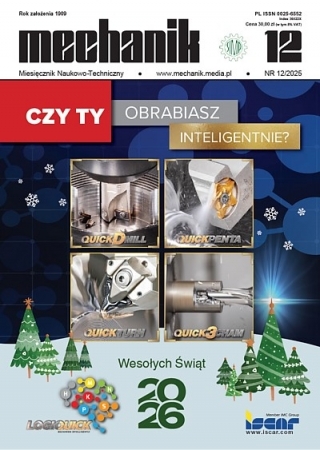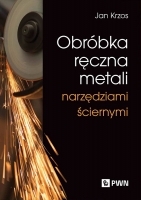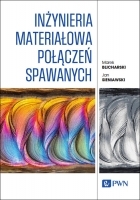Model matematyczny oceny wpływu odchyłki okrągłości i falistości powierzchni bieżni łożysk tocznych na poziom generowanych drgań *
Mathematical model of the impact assessment of roughness and waviness deviations of races surfaces of rolling bearings on the level of generated vibration
Mechanik nr 01/2019 - Metrologia techniczna
STRESZCZENIE: W artykule zaprezentowano modele matematyczne, opisujące poziom drgań generowanych przez kulkowe łożyska toczne typu 6304-2z w zależności od wartości odchyłki okrągłości i falistości bieżni wewnętrznej oraz zewnętrznej. Modele pozwalają na ustalenie, który typ odchyłek kształtu ma dominujący wpływ na poziom drgań generowanych w określonych zakresach częstotliwości.
SŁOWA KLUCZOWE: kulkowe łożyska toczne, anderon, drgania, okrągłość, falistość
ABSTRACT: The article presents mathematical models allowing to describe the level of vibration generated by ball bearings 6304-2z type depending on the value of roughness and waviness deviations of inner and outer bearings races. This models will allow to estimate what type of shape deviations have dominant influence on the vibration level generated in specific frequencyranges.
KEYWORDS: ball rolling bearings, anderon, vibration, roundness, waviness
BIBLIOGRAFIA / BIBLIOGRAPHY:
- El-Thalji I., Jantunen E. “Fault analysis of the wear fault development in rolling bearings”. Engineering Failure Analysis. 57 (2015): s. 470–482.
- Kaczor J. „Wpływ luzu w łożyskach kulkowych na nieprawidłową pracę wału trzypodporowego”. Zeszyty Naukowe Politechniki Śląskiej. 83 (2014): s. 117–126.
- Kiral Z., Karagülle H. “Vibration analysis of rolling element bearings with various defects under the action of an unbalanced force”. Mechanical Systems and Signal Processing. 20 (2006): s. 1967–1991.
- Mitrovica R.M., Miskovica Z.Z., Djukica M.B., Bakica G.M. “Statistical correlation between vibration characteristics, surface temperatures and service life of rolling bearings – artificially contaminated by open pit coal mine debris particles”. Procedia Structural Integrity. 2 (2016): s. 2338–2346.
- Adamczak S., Zmarzły P. “Influence of raceway waviness on the level of vibration in rolling-element bearings”. Bull. Pol. Ac.: Tech. 65, 4 (2017): s. 541–551.
- Liu W., Zhang Y., Feng Z.-J., Zhao J.-S., Wang D. “A study on waviness induced vibration of ball bearings based on signal coherence theory”. Journal of Sound and Vibration. 333 (2014): s. 6107–6120.
- Wang X., Xu Q., Wang B., Zhang L., Yang H., Peng Z. “Effect of surface waviness on the static performance of aerostatic journal bearings”. Tribology International. 103 (2016): s. 394–405.
- Ren Z., Wang J., Guo F., Lubrecht A.A. “Experimental and numerical study of the effect of raceway waviness on the oil film in thrust ball bearings”. Tribology International. 73 (2014): s. 1–9.
- Adamczak S., Stępień K., Wrzochal M. “Comparative study of meas-urement systems used to evaluate vibrations of rolling bearings”. Procedia Engineering. 192 (2017): s. 971–975.
- Muciek A. „Wyznaczanie modeli matematycznych z danych eksperymentalnych”. Wrocław: Oficyna Wydawnicza Politechniki Wrocławskiej, 2012
DOI: https://doi.org/10.17814/mechanik.2019.1.5
* Artykuł recenzowany





















